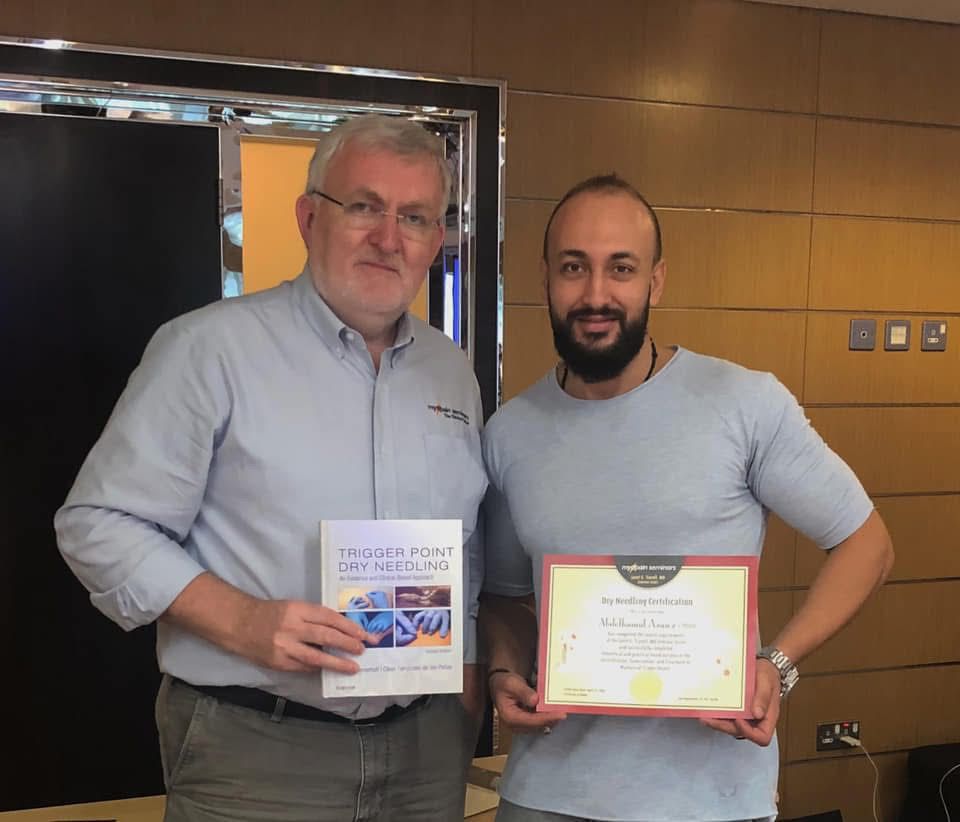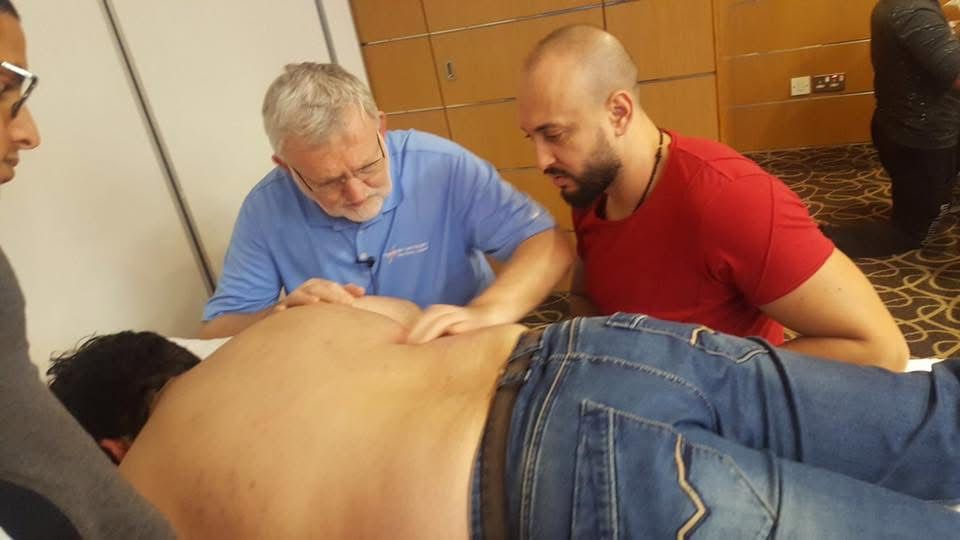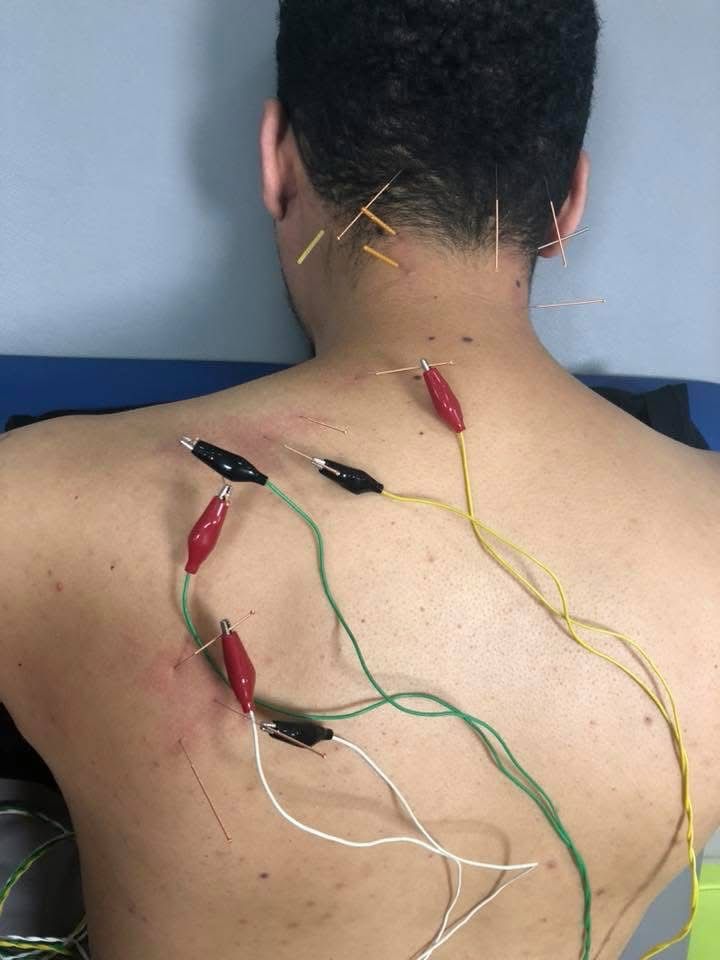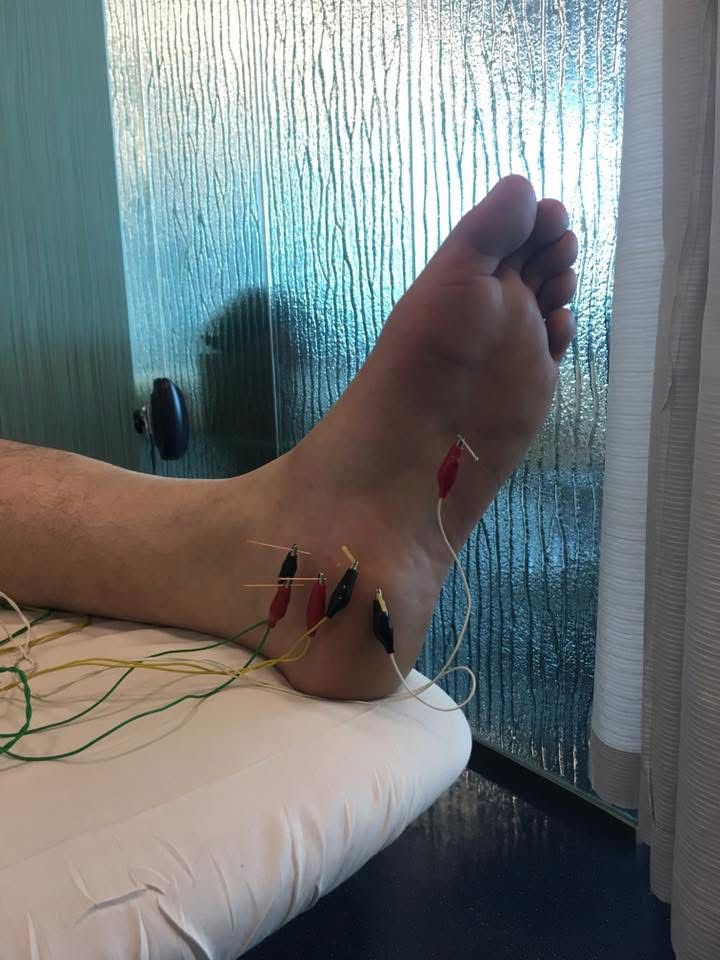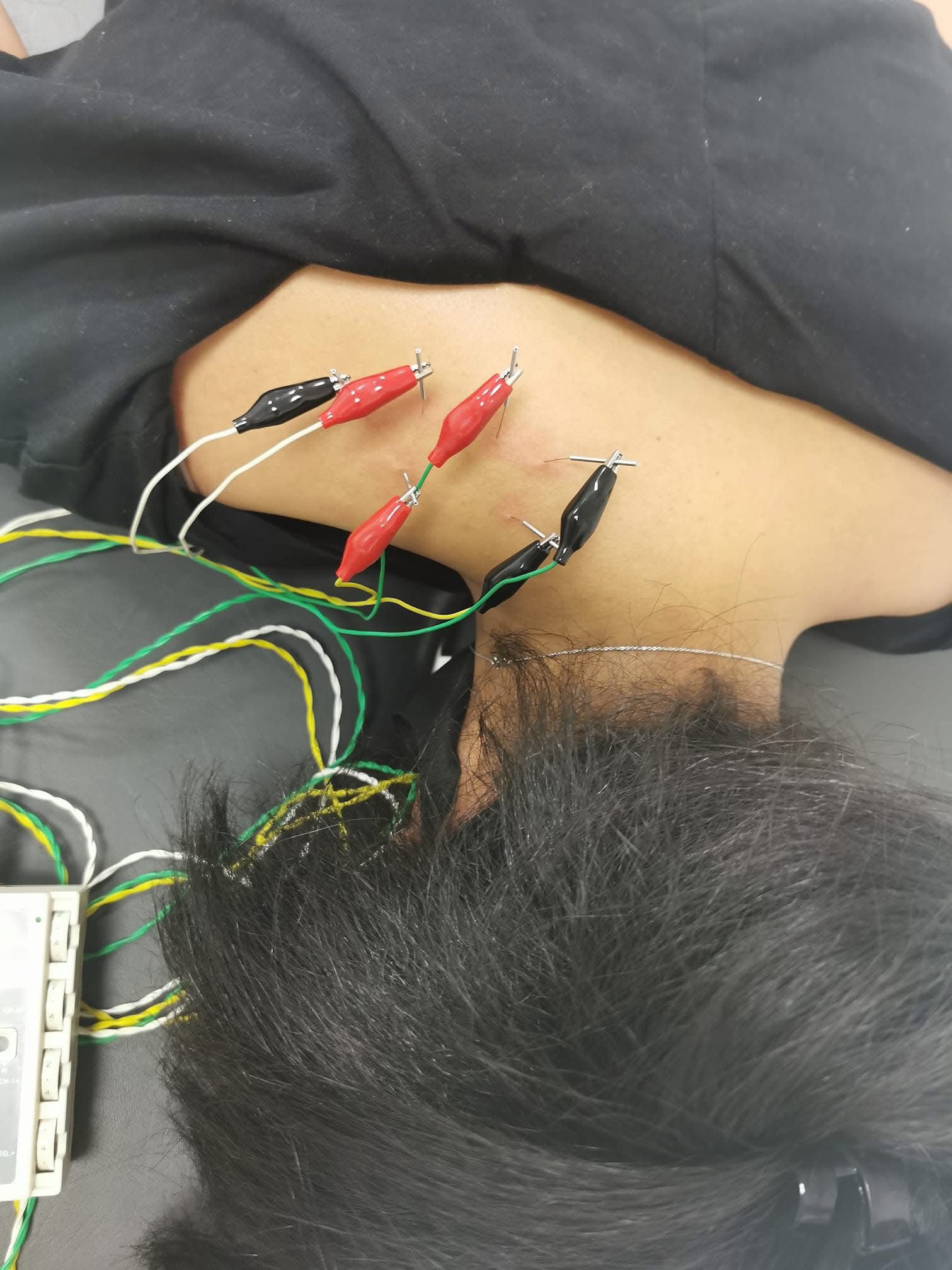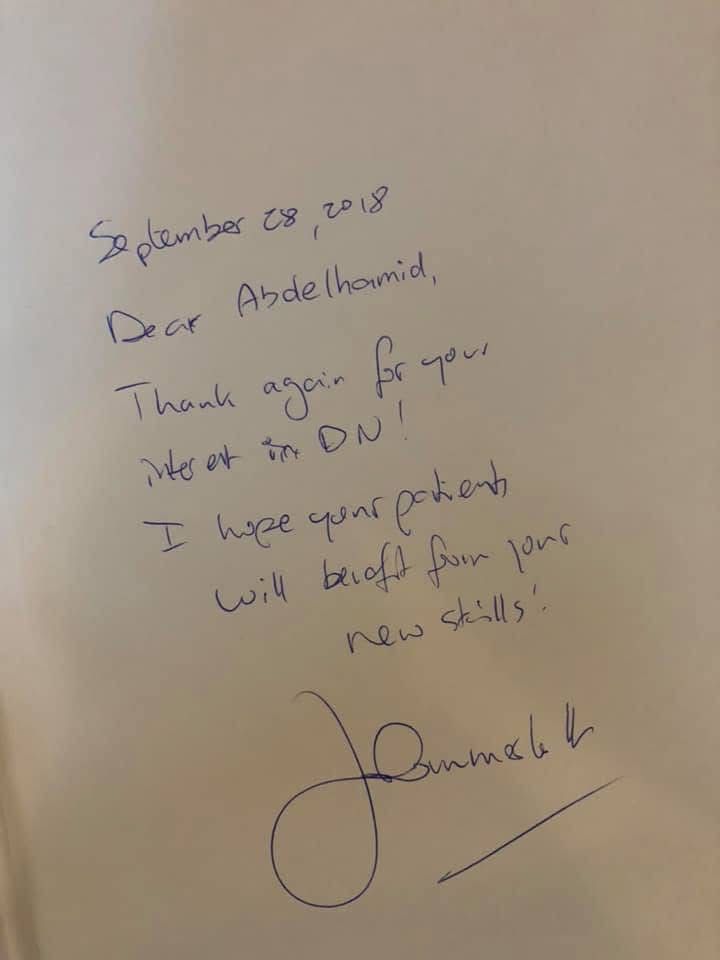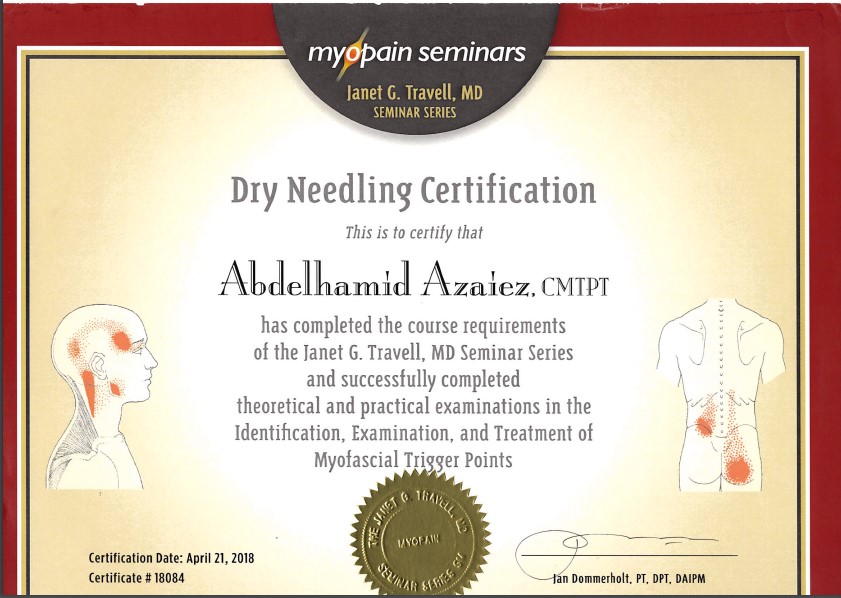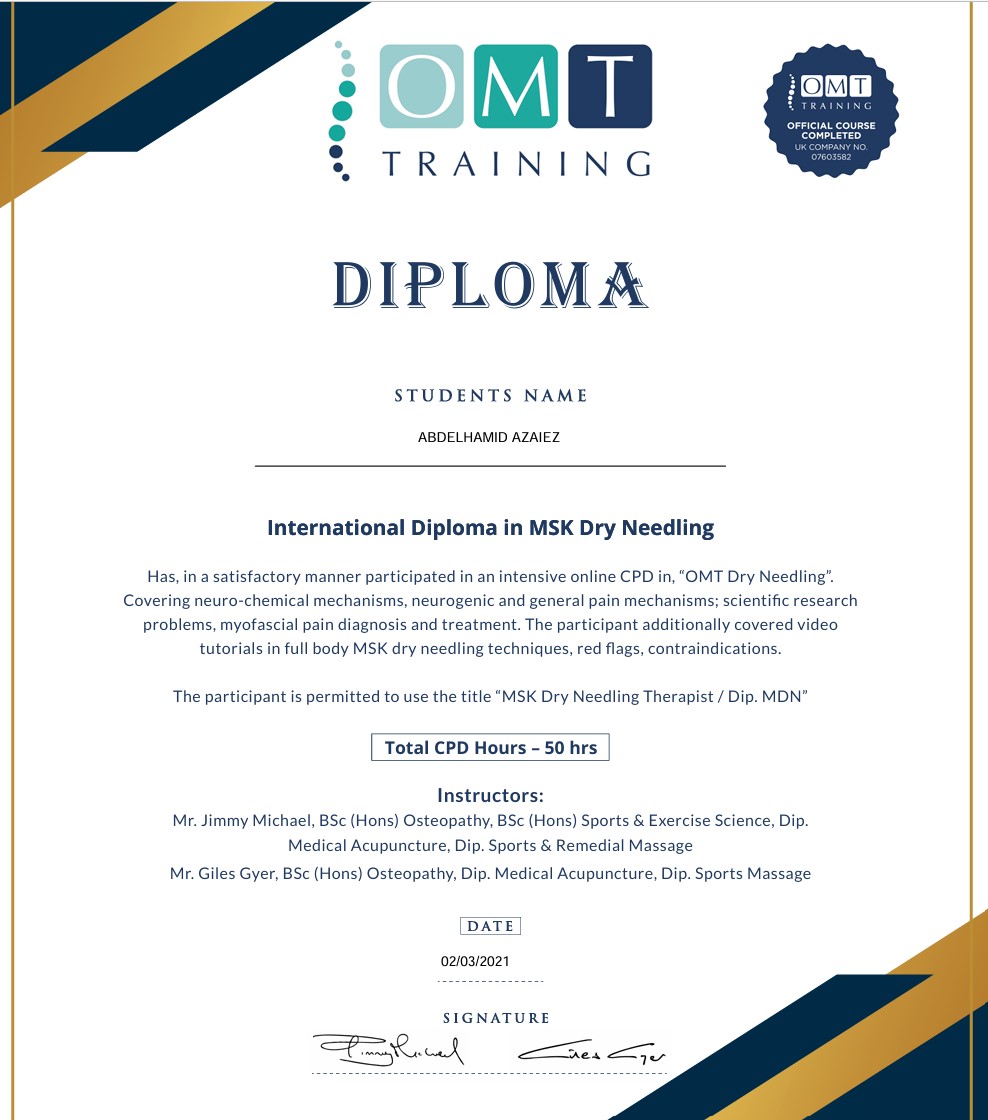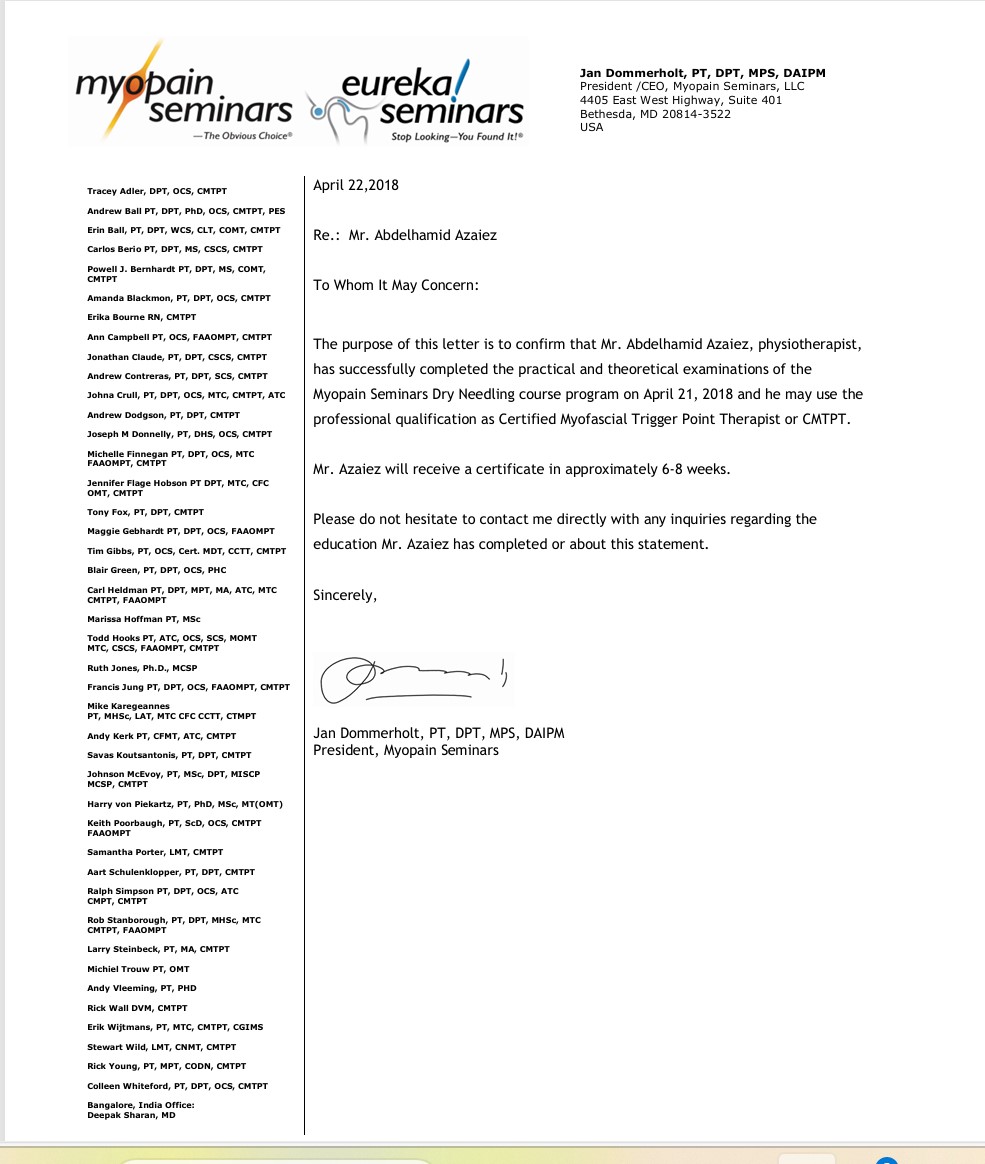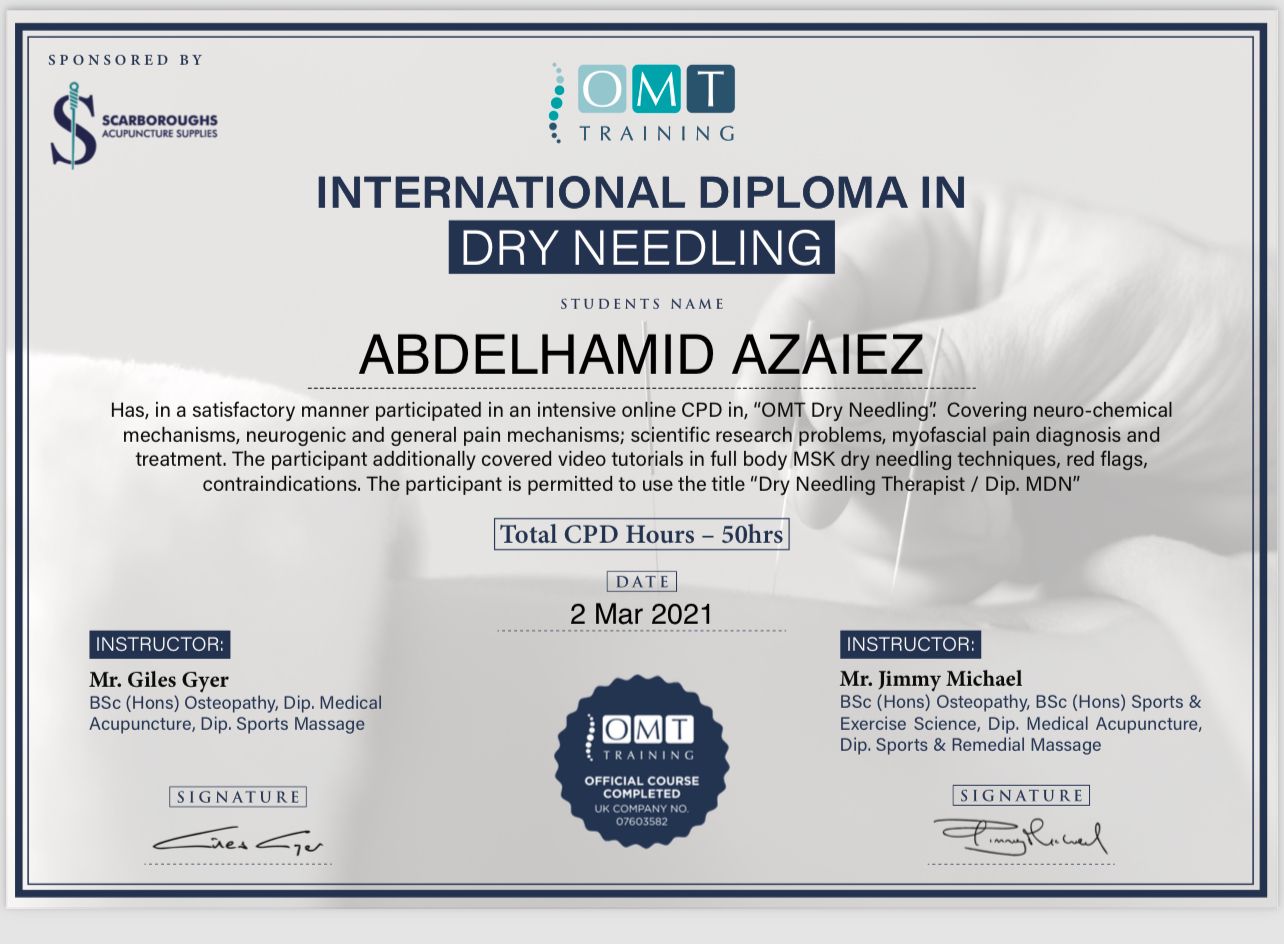
Dry Needling
*What is IT:
Dry needling, also known as intramuscular stimulation, is the use of solid filiform or “non injection” needles to stimulate specific reactions in an area of muscle tissue and the surrounding fascia, or membrane, in order to alleviate pain. Dry needling has been a viable treatment technique for myofascial (involving the muscle and surrounding connective tissue) pain since the 1940s. At that time, Janet G. Travell (1901-1997), a physician-researcher who specialized in treating patients with myofascial pain and served as President John F. Kennedy’s personal physician, discovered that dry needling is as effective as “wet needling”—the use of hollow-core hypodermic needles to inject a fluid, such as a local anesthetic or saline solution—in relieving myofascial pain. Thanks largely to researchers like Dr. Travell, the use of dry needling has become more popular, particularly in the world of physical therapy.
*Does it hurt?
When a needle is inserted into a healthy muscle there is usually little discomfort. In the case of tight muscles and those with active trigger points, there may be a little sting or feeling of a cramp which is the twitch response. Sometimes the pain that brought you to the clinic in the first place is reproduced by the needling. This is a good sign that your therapist has located the source of your pain and is treating it effectively by deactivating the trigger point and restoring normal length and function to the muscle.
*How can it help me?
Dry Needling can generally help to break down tight muscle, trigger points and sources of pain for patients quickly and easily. It is sometimes quicker and less painful than massage or cupping. Consider dry needling if you suffer from any form of muscular tension, any pain that travels, pain in your hands, wrists, arms, shoulders, neck, upper back, lower back, buttocks, hips, hamstrings, quads, calves or feet.
